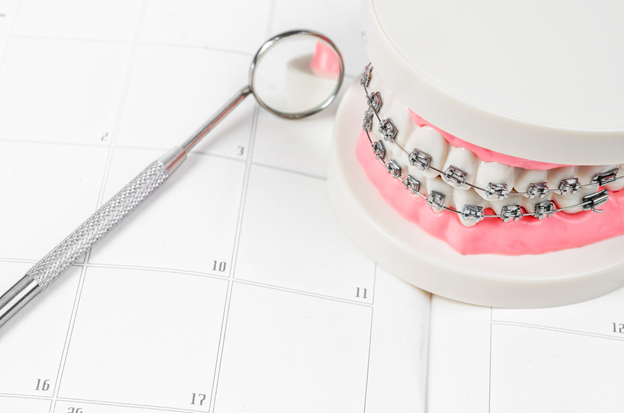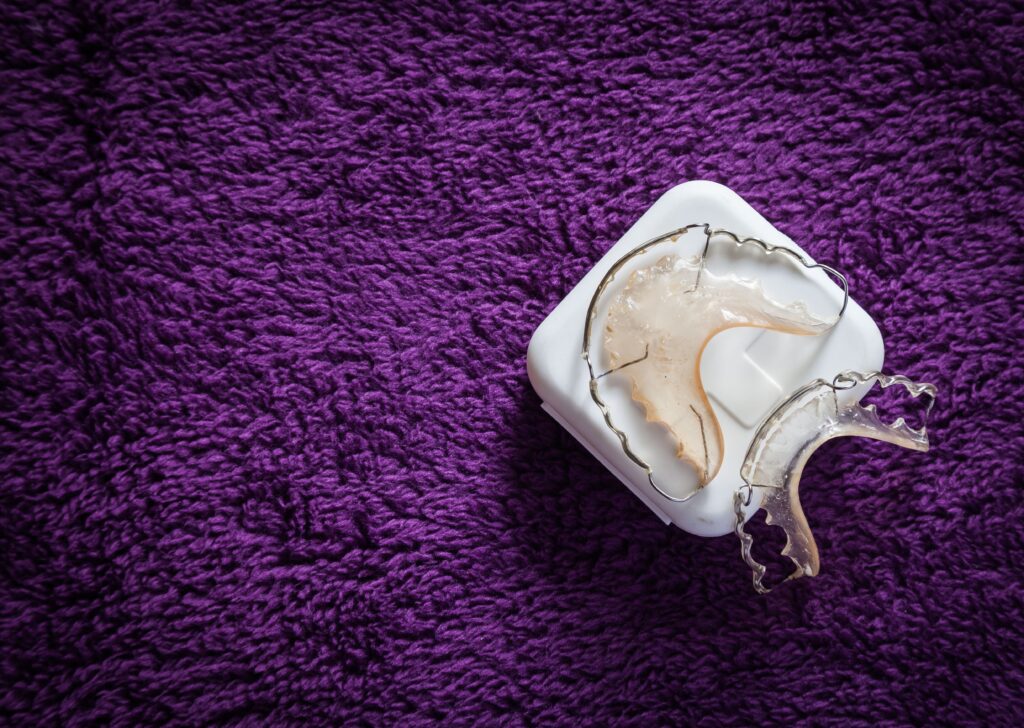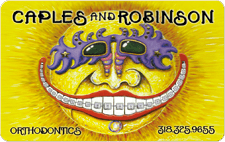
So, you’ve invested in a set of braces to beautify your smile. Although most of the work will be done for you by your Monroe orthodontist and the braces themselves, you still have a part to play in keeping your smile healthy and beautiful by taking care of your braces on a daily basis. The care that you put into your daily brushing, flushing and flossing will make all the difference for your oral health as well as how beautiful your smile will look once your braces are removed.
What Gets Caught in and Around Your Braces?
Orthodontic hardware can become a breeding ground for germs if not cleaned properly on a daily basis. Although we know them simply as braces, when disassembled into parts they include brackets, bands, wires, springs, screws, and elastics, meaning there are quite a few pieces of hardware that stubborn food particles and germs can reside in. When braces aren’t cleaned properly, the germs can linger and multiply in the various nooks and crannies of your orthodontic hardware. Those germ colonies then develop into plaque biofilm, which presents itself as a chalky patch on the tooth around the braces. If these patches are not properly cleaned off of the tooth, the risk of tooth decay is drastically increased. Sugary and acidic foods increase the chances of developing plaque biofilm around your braces if they are not being cleaned daily and properly.
Cleaning Your Braces at Home
The good news is that keeping your braces clean at home is a quick and easy process when done consistently. For great orthodontic health, remember the BFF acronym – Brush, Flush, and Floss.
Brush: Be sure to put some extra time and care into your brushing with braces. Brush your teeth at different angles to get to those hard-to-reach places between brackets. It may even be beneficial to physically hold your lip up to get every last spot. Remember to remove and elastic or bands before brushing, as they can block your brushing efforts and contribute to the development of plaque biofilm.
Flush: Oral irrigation systems, or simply flushing your mouth with water, are necessary for optimal oral health with braces. Water can dislodge food particles from the various parts of your orthodontic hardware, reducing your risk of developing tooth decay or plaque. At-home oral irrigation systems are specialized tools that push a thin stream of water to flush in between your teeth and are available at local drugstore and retail stores. Oral irrigation systems are recommended but not required for optimal oral health with braces. Simply swishing water in between your teeth after meals and snacks will do the trick, as long as you keep it up regularly.
Floss: Flossing is especially important to keep your braces and mouth clean. Often times a piece of floss or an interdental cleaner is the only tool that can reach in between wires and brackets. It is important to thread floss under the wires of your braces every day in order to stay clean and healthy.
Don’t let the excitement of having your braces removed be overshadowed by dirty or decaying teeth. By learning how to effectively clean your braces, you’ll be sure to end up with a healthy and confident smile.
If you’d like us to show you how it’s done or need to see us for a follow up appointment, contact our Monroe orthodontic office to schedule a visit. We’ll be happy to provide you with any help or support that you may need in order to ensure you have a beautiful new smile by the end of your orthodontic treatment.
Caples & Robinson Orthodontics
Phone: (318) 325-9655
Url: https://caplesrobinsonortho.com/
2210 Forsythe Ave.
Monroe, LA 71201















